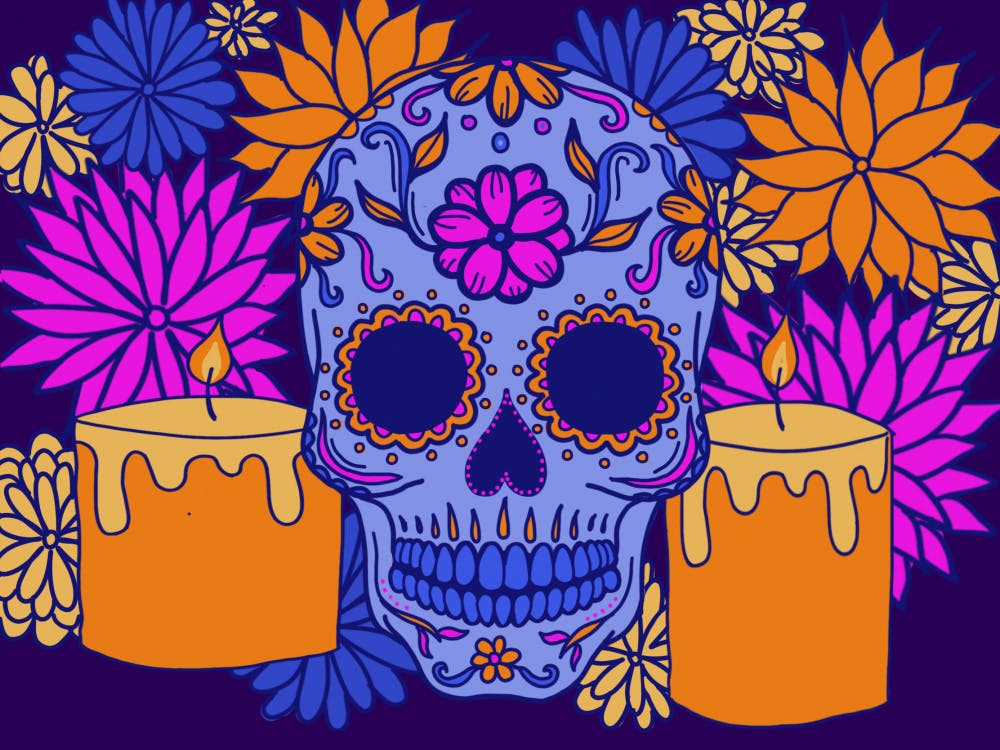Dead bread. Doesn't sound too appetizing, does it? With Halloween festivities recently past, I feel like I've been surrounded by all things spooky and scary. And even though "dead bread" sounds like it’d be frightening, I can tell you right now—it's not. It's delicious.
Pan de muerto, literally translated to "bread of the dead," is a Mexican sweet roll prepared and served in the days and weeks leading up to Día de Muertos, a Mexican holiday celebrated from October 31—November 2. Día de Muertos, or "day of the dead," centers on gatherings of family and friends to commemorate and celebrate the lives of their deceased loved ones. Traditionally, altars called ofrendas, literally meaning "offerings," are set up and decorated to honor the deceased. Typical decorations include photos of the departed, Aztec marigolds, candles, sugar skulls, memorabilia, and favorite meals of the deceased.


Like any other holiday, there are hella dishes/beverages associated with and made specifically for Día de Muertos. Tamales, agua de Jamaica, mole, tequila, candied pumpkin—the list goes on. It was hard to pick which ones I wanted to make, but after due deliberation, I settled on pan de muerto and Mexican hot chocolate. My choices may or may not have had something to do with my obsession with The Great British Bake Off. And thanks to said obsession, I was actually pretty nervous to attempt this recipe. I can hold my own in the kitchen, but I'd never made bread from scratch before. It’s time intensive and notoriously hard af to get right—but I was committed.
My journey started out like many others—at FroGro, gathering the ingredients I didn’t already have in my humble Harrison kitchen. Granulated sugar, milk, anise seed, oranges, dry active yeast—that last one took me a full 30 minutes to find. But after checking everything off my list, I returned to my room and prepped my working area. Following an online recipe, I mixed melted butter, milk, and eggs with a flour mixture to create a soft dough. After ten minutes of kneading, I covered it in cling wrap and let it rise for two hours. I then shaped it into a bun and made my attempt at decorating it with traditional bone–shaped pieces of dough. After another two and a half hours of re–rising and baking, it was (finally) done. I topped the hot bread with an orange–sugar glaze and served it with Mexican hot chocolate made from steamed milk, cinnamon, chocolate, salt, vanilla extract and cayenne. After tasting it when it was cooled, I was actually pretty proud of myself. It didn’t look as pretty as the ones I’d previously seen in supermarkets and online, but it was baked all the way through and tasted good—even better when dipped in the hot chocolate. Not necessarily Mary Berry worthy, but not bad for an amateur either.

I love to cook and bake, so I already knew I’d enjoy doing this in spite of the time it required. But what I didn’t know was how connected to home I would feel. As a Hispanic Penn student, I have found that it can be difficult to find ways to feel at home and engage with my Mexican heritage while I’m in a place so different and far from my family and hometown. But food has always been a huge part of how I identify with my Mexican background. The saying “you are what you eat” hits a little too close to home for me, but it’s true. I always feel better and a little more "me," when I eat something that reminds me of home. In fact, as I ate my carb–loaded creation, I sent photo updates to my Mom (like every other clingy college sophomore) and in turn, she sent me a picture of an ofrenda my Aunt had made for my Grandpa and recently–passed Grandma. Cue the waterworks.

Making this dish not only gave me the chance to eat some bangin’ bread, but also to feel closer to the home that I miss so much.







